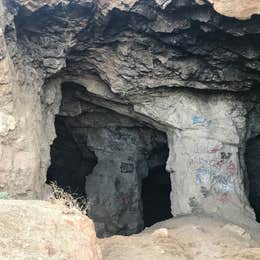Top Dispersed Camping near Nipton, CA
Searching for a dispersed camping spot near Nipton? Dispersed camping is the perfect way to get off the grid. Search dispersed campsites you've visited before, or discover new spots and read camper reviews.
Searching for a dispersed camping spot near Nipton? Dispersed camping is the perfect way to get off the grid. Search dispersed campsites you've visited before, or discover new spots and read camper reviews.
A large part of the Spring Mountains is remote and undeveloped. Visitors can venture out and set up camp in these remote areas with just a little planning from the guidelines below
The best known areas in the Spring Mountains include Mack's Canyon, Champion Road, and Lovell Canyon but those can get crowded in warm weather. Dispersed camping is NOT allowed in the vicinity of developed recreation areas such as campgrounds, picnic areas, or trailheads. Many people drive or hike out on Forest Service roads into the woods and find a clearing or a spot with a nice view or good shade. Do not drive on meadows to access your camping site. Drive on existing roads to prevent resource damage. Dispersed camping is allowed outside a one-mile perimeter away from campgrounds and 100 feet from any stream or spring. To prevent resource damage please keep your campsite within 150 feet from a roadway.
How to Pick a Campsite If you are going to an area where others have camped before, pick a site that has been used before. Plants, soil and wildlife are impacted by new campsites so using existing ones will minimize your impact in the forest. If there is no existing campsite, then follow these Leave No Trace guidelines.
Do NOT camp within 100 feet of any water source, as plants near water are especially fragile.
Going to the Bathroom in the Woods Dispersed camping means no bathrooms and no outhouses. That means extra care has to be taken in disposing of human waste. To dispose of feces, dig a hole six (6) inches deep at least 100 feet away from any water source. When you are done, fill the hole with the dirt you dug up and take your toilet paper with you to dispose of in a proper waste container. A ziplock bag is helpful for this. Never defecate or leave toilet paper on top of the ground since it could easily get into the local water source and contaminate it.
Treating Your Water We used to be able to take a cup and drink directly out of the sparkling creek, a rushing waterfall, or a clear, deep lake. There is NO safe water source anymore. With an increasing population and visitation to the Spring Mountains, water sources have been contaminated with invisible micro-organisms that can make people very ill and even kill them in some cases. Giardia is a common contamination that has been spread through improper toileting and wild animals to many water sources. It will cause diarrhea, cramping, and other physical problems. The only way to ensure that water from any undeveloped source is safe is to treat it. That means heating it until it comes to a rolling boil, using water purification tablets or a water purification filter. Water from faucets in developed recreation areas has been tested and treated and is safe to use without treating.
Camping in undeveloped campsites is allowed in previously used or disturbed sites outside of the "day-use-only" areas. In most cases these sites include a rock or metal fire ring; not all sites contain a fire ring. All fires must be in a fire ring or fire pan; new fire rings cannot be constructed. Camping tramples vegetation and disturbs soils. By reusing existing sites, you help protect the desert from further damage. Practice Leave No Trace principles, including burrying human waste at least six inches deep.
Careful planning and knowledge of camping guidelines and regulations will help ensure an enjoyable and safe experience for you, future visitors, and the fragile desert environment.
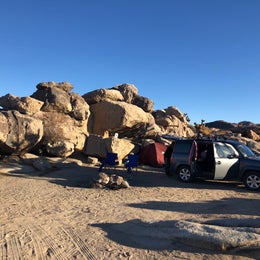
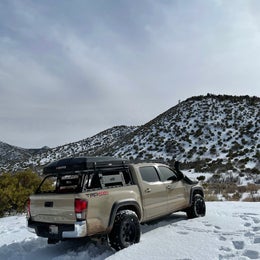
A large part of the Spring Mountains is remote and undeveloped. Visitors can venture out and set up camp in these remote areas with just a little planning from the guidelines below
The best known areas in the Spring Mountains include Mack's Canyon, Champion Road, and Lovell Canyon but those can get crowded in warm weather. Dispersed camping is NOT allowed in the vicinity of developed recreation areas such as campgrounds, picnic areas, or trailheads. Many people drive or hike out on Forest Service roads into the woods and find a clearing or a spot with a nice view or good shade. Do not drive on meadows to access your camping site. Drive on existing roads to prevent resource damage. Dispersed camping is allowed outside a one-mile perimeter away from campgrounds and 100 feet from any stream or spring. To prevent resource damage please keep your campsite within 150 feet from a roadway.
How to Pick a Campsite If you are going to an area where others have camped before, pick a site that has been used before. Plants, soil and wildlife are impacted by new campsites so using existing ones will minimize your impact in the forest. If there is no existing campsite, then follow these Leave No Trace guidelines.
Do NOT camp within 100 feet of any water source, as plants near water are especially fragile.
Going to the Bathroom in the Woods Dispersed camping means no bathrooms and no outhouses. That means extra care has to be taken in disposing of human waste. To dispose of feces, dig a hole six (6) inches deep at least 100 feet away from any water source. When you are done, fill the hole with the dirt you dug up and take your toilet paper with you to dispose of in a proper waste container. A ziplock bag is helpful for this. Never defecate or leave toilet paper on top of the ground since it could easily get into the local water source and contaminate it.
Treating Your Water We used to be able to take a cup and drink directly out of the sparkling creek, a rushing waterfall, or a clear, deep lake. There is NO safe water source anymore. With an increasing population and visitation to the Spring Mountains, water sources have been contaminated with invisible micro-organisms that can make people very ill and even kill them in some cases. Giardia is a common contamination that has been spread through improper toileting and wild animals to many water sources. It will cause diarrhea, cramping, and other physical problems. The only way to ensure that water from any undeveloped source is safe is to treat it. That means heating it until it comes to a rolling boil, using water purification tablets or a water purification filter. Water from faucets in developed recreation areas has been tested and treated and is safe to use without treating.
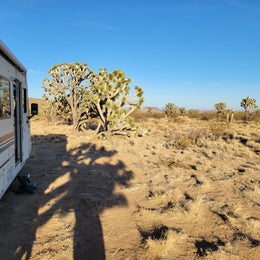
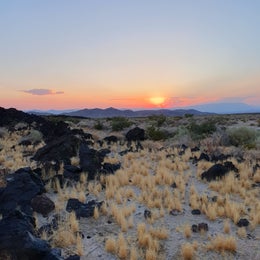
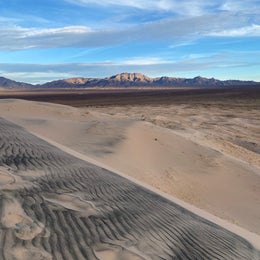
Camping in undeveloped campsites is allowed in previously used or disturbed sites outside of the "day-use-only" areas. In most cases these sites include a rock or metal fire ring; not all sites contain a fire ring. All fires must be in a fire ring or fire pan; new fire rings cannot be constructed. Camping tramples vegetation and disturbs soils. By reusing existing sites, you help protect the desert from further damage. Practice Leave No Trace principles, including burrying human waste at least six inches deep.
Careful planning and knowledge of camping guidelines and regulations will help ensure an enjoyable and safe experience for you, future visitors, and the fragile desert environment.
